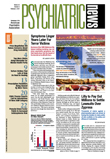The old saying “I've graduated from the school of hard knocks” may carry a deeper meaning. For some years, it has been known that if rats are exposed to a stressor over which they have no control, they will show characteristics associated with depression, but if they are first exposed to a stressor over which they have control, the experience seems to inoculate them against depression-like symptoms in the subsequent situation.
Now the brain circuitry involved in bestowing such resilience appears to have been identified. It includes the ventral medial prefrontal cortex and the brainstem's dorsal raphe nucleus.
The findings were made by scientists in the University of Colorado's Department of Psychology and Center for Neuroscience. The lead investigator was research associate Jose Amat, Ph.D., and the senior investigator was Steven Maier, Ph.D. Their results were published in the December 20, 2006, Journal of Neuroscience.
In one set of experiments, Amat and his team exposed rats to a controllable stressor and then to an uncontrollable one. The control experience appeared to shield the animals from depression-like reactions. Then they implanted, under anesthesia, cannulas in the rats' brains and subsequently injected a chemical through the cannulas to inactivate the rats' ventral medial prefrontal cortexes. Then after that, they exposed the rats to a controllable stressor, and then to an uncontrollable one. This time the control experience did not shield the animals from depression-like behavior. Thus the ventral medial prefrontal cortex seemed to be critical for transforming a control experience into a defense against an uncontrollable one.
In another experiment, Amat and his colleagues deprived rats of control over a stressor, then determined whether serotonergic cells in their dorsal raphe nuclei were activated. The cells were in fact activated, indicating that this brainstem area was involved in processing uncontrollable stress. Then the researchers gave the rats control over a stressor, deprived them of control over another, and looked to see whether serotonergic cells in their dorsal raphe nuclei were activated. This time the cells were not turned on. Thus the dorsal raphe nucleus seemed to be involved in transforming a controlled experience into a defense against an uncontrollable one.
Exactly how the ventral medial prefrontal cortex and dorsal raphe nucleus collaborate to transform a control experience into immunity against an uncontrollable one is unknown, Amat and his coworkers noted in their report. But the results, they said, suggest that the ventral medial prefrontal cortex processes information about the controllability of stressors and then uses that information to switch off the dorsal raphe nucleus, giving one an“ illusion of control.”
As for practical implications of their findings, Amat and his team concluded, “Perceived control, or coping more generally, can buffer individuals against the negative impact of stress, and enhancement of ventral medial prefrontal cortex inhibition control over limbic and brainstem stress-responsive structures may be an important mediating mechanism.”
And as Thomas Insel, M.D., director of the National Institute of Mental Health, noted in an accompanying press release, “Lack of control over stressful life experiences has been implicated in mood and anxiety disorders. Understanding how the brain encodes the experience of control to protect against such adverse consequences should help us develop better treatments for these disorders.”
The study was financed by the National Institute of Mental Health.
An abstract of “Previous Experience With Behavioral Control Over Stress Blocks the Behavioral and Dorsal Raphe Nucleus Activating Effects of Later Uncontrollable Stress: Role of the Ventral Medial Prefrontal Cortex” is posted at<www.jneurosci.org/cgi/content/abstract/26/51/13264>.▪
